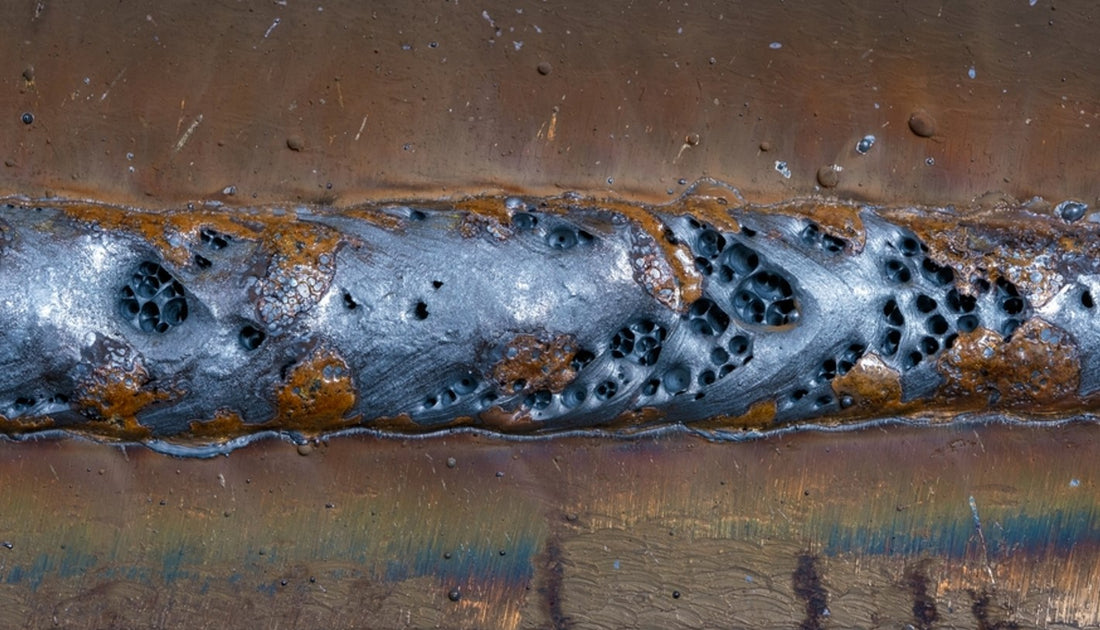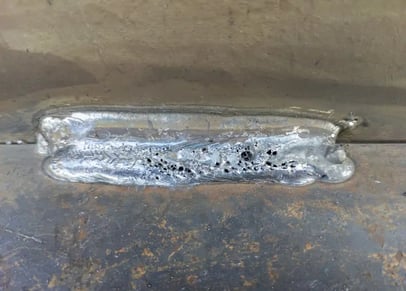Comprehensive Overview: What is Porosity in Welding and Exactly How to Prevent It
Comprehensive Overview: What is Porosity in Welding and Exactly How to Prevent It
Blog Article
Unwinding the Mystery of Porosity in Welding: Tips for Decreasing Problems and Making Best Use Of Quality
In the complex globe of welding, porosity continues to be a consistent obstacle that can substantially influence the high quality and integrity of bonded joints. As we dive right into the depths of porosity in welding, uncovering the secrets to its avoidance and control will certainly be vital for experts looking for to understand the art of high-grade weldments.
Understanding Porosity in Welding
Porosity in welding, a typical problem experienced by welders, refers to the visibility of gas pockets or gaps in the welded material, which can compromise the integrity and top quality of the weld. These gas pockets are usually entraped throughout the welding procedure due to various factors such as incorrect protecting gas, polluted base materials, or wrong welding criteria. The development of porosity can weaken the weld, making it at risk to cracking and rust, eventually bring about structural failings.
Recognizing the origin of porosity is critical for welders to effectively avoid its event. By recognizing the value of preserving appropriate gas protecting, ensuring the sanitation of base products, and enhancing welding setups, welders can considerably minimize the probability of porosity development. In addition, utilizing methods like preheating the base product, using correct welding strategies, and performing extensive inspections post-welding can additionally assist in lessening porosity flaws. Generally, a detailed understanding of porosity in welding is essential for welders to produce top quality and durable welds.

Typical Reasons For Porosity
When checking welding processes for possible high quality concerns, comprehending the common causes of porosity is essential for keeping weld stability and protecting against architectural failings. Porosity, defined by the presence of tooth cavities or voids in the weld steel, can significantly jeopardize the mechanical residential or commercial properties of a welded joint.
Another widespread source of porosity is the existence of dampness and pollutants externally of the base metal or filler material. When welding materials are not properly cleansed or are subjected to high degrees of humidity, the evaporation of these pollutants during welding can create voids within the weld grain. In addition, welding at improper specifications, such as excessively high traveling speeds or currents, can produce excessive turbulence in the weld pool, trapping gases and creating porosity. By dealing with these common reasons via proper gas shielding, material prep work, and adherence to ideal welding specifications, welders can decrease porosity and enhance the high quality of their welds.
Strategies for Porosity Avoidance
Implementing reliable safety nets is important in minimizing the occurrence of porosity in welding processes. One this contact form technique for porosity prevention is guaranteeing proper cleansing of the base steel prior to welding. Pollutants such as oil, oil, corrosion, and paint can cause porosity, so detailed cleaning utilizing proper solvents or mechanical methods is important.

One more secret safety net is the selection of the right welding consumables. Using top quality filler materials and securing gases that appropriate for the base steel and welding procedure can substantially decrease the risk of porosity. Additionally, keeping correct welding specifications, such as voltage, present, travel rate, and gas circulation rate, is important for porosity prevention. Differing the advised settings can result in improper gas insurance coverage and insufficient combination, leading to porosity.
Moreover, employing correct welding strategies, such as keeping a constant traveling speed, electrode angle, and arc length, can assist avoid porosity (What is Porosity). Ample training of welders to ensure they adhere to finest practices and top quality control procedures is additionally vital in minimizing porosity problems in welding

Best Practices for High Quality Welds
Ensuring adherence to sector requirements and proper weld joint preparation are essential elements of accomplishing consistently high-quality welds. Along with these foundational actions, there are a number of finest techniques that welders can carry out to even more improve the top quality of their welds. One key technique is preserving appropriate tidiness in the welding area. Contaminants such as oil, oil, corrosion, and paint can detrimentally influence the top quality of the weld, leading to flaws. Completely cleaning the workpiece and surrounding area before welding can aid reduce these problems.
Another best technique is to very carefully pick the proper welding parameters for the certain materials being signed up with. This consists of setting the appropriate this contact form voltage, present, travel speed, and shielding gas circulation price. Appropriate parameter selection makes sure optimum weld penetration, fusion, and overall top quality. Utilizing premium welding consumables, such as electrodes and filler metals, can significantly impact the last weld high quality. Spending in costs consumables can cause more powerful, extra resilient welds with less flaws. By complying with these finest techniques, welders can continually create top quality welds that fulfill sector criteria and surpass customer expectations.
Value of Porosity Control
Porosity control plays an important function in guaranteeing the honesty and quality of welding joints. Porosity, Extra resources characterized by the visibility of tooth cavities or voids within the weld metal, can dramatically compromise the mechanical residential properties and architectural honesty of the weld. Extreme porosity damages the weld, making it more vulnerable to splitting, corrosion, and general failing under operational loads.
Effective porosity control is important for maintaining the preferred mechanical homes, such as stamina, ductility, and sturdiness, of the welded joint. What is Porosity. By lessening porosity, welders can boost the total high quality and integrity of the weld, making sure that it fulfills the performance demands of the designated application
Additionally, porosity control is crucial for accomplishing the preferred aesthetic look of the weld. Too much porosity not just weakens the weld yet likewise interferes with its visual appeal, which can be critical in markets where aesthetics are very important. Correct porosity control methods, such as making use of the proper protecting gas, managing the welding criteria, and making sure proper cleanliness of the base materials, are vital for generating top quality welds with very little defects.

Conclusion
In verdict, porosity in welding is a common flaw that can endanger the quality of the weld. It is vital to regulate porosity in welding to guarantee the stability and stamina of the final product.
Report this page